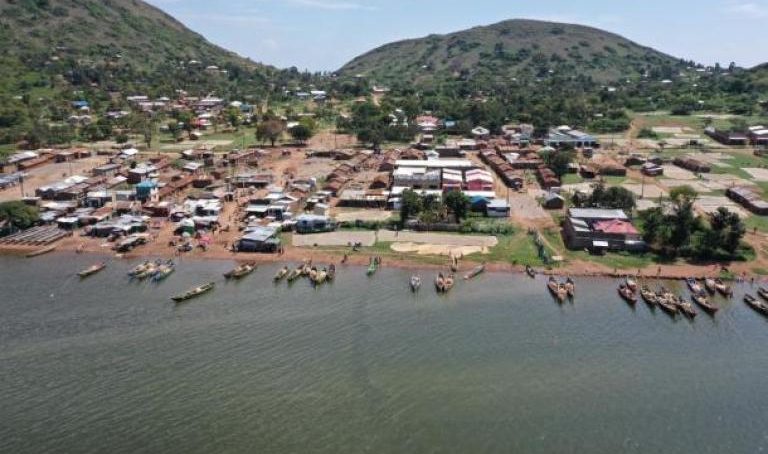
This article is by one of pioneer graduates in the biology of conservation (conservation biology in the very early 1980s at the University of Nairobi, Kenya, the first university in the whole world to train conservation biologists following the emergence of conservation biology as a new field of knowledge and practice.
Iam happy that I am still alive to tell the story and able to contribute to new thinking in this field.
Why the environment continues to be degraded
One reason why environment has been degraded and continues to be degraded is because it is conceived in physical terms only. But environment is more than physical. It includes the non-physical. In fact, it is everything. The hundreds of students who passed through my hands at Makerere University learning environmental management, environmental planning and management, the biology of conservation and environmental politics, will remember that environment is everything is the definition I gave them. I set out to demystify the classical definition of environment as “the surroundings or conditions in which people, animals and other living things exist, survive, operate and die”, or its alternative definition as “the complex of physical, chemical and biotic factors and abiotic factors that act upon an organism or an ecological community, ultimately determining its form and survival”.
Because environment is almost universally seen in physical terms only all our laws and policies for conservation and management of the environment have been skewed towards physical considerations only, which is wrong, immoral and unethical. We have continued to ignore the nonphysical aspects of the environment and the interconnectivity between the physical and the nonphysical to very worrying proportions.
This has made us ignorant of the truth, and we have all along conserved or attempted to conserve, the environment in ignorance of the truism that environment is more than physical and that without seeking out the connectivity between the physical and the nonphysical, all environmental problems start with us as the source and end with us as the victims.
Environmental ignorance is the worst form of ignorance, because it includes all forms of ignorance. Unfortunately, this environmental ignorance is now institutionalised as if it is a virtue and of value.
Dimensions of the environment
Let me try to shatter environmental ignorance. I have already said environment is everything. But saying that environment is everything is not enough. We must recognise that this “everything” is arranged in four dimensions: the ecological-biological dimension, which is the physical dimension; the socioeconomic dimension, which is nonphysical; the socio-cultural dimension, which is nonphysical; and the temporal or time dimension, which is also nonphysical. Each dimension constitutes a quarter or 25 per cent of the total environment.
The dimensions of the environment are interdependent, interconnected and mutually inclusive. Each of the dimensions has aspects of the others and interpenetrates the others. This means that to understand the environment broadly and undertake to conserve and manage it effectively it is important to take in account these often-ignored facts.
In historical times, before disintegration of everything conceivable became fashionable, cultural groups conserved and managed the environment as one integrated whole – as everything – and almost 80 per cent of the conservation and management of the environment was the work of women. So, the real managers of the environment were women and the function was both social and biological. The women connected the physical and non-physical, with the aim of ensuring sustainability of all the dimensions, their interconnectivity and their interdependence.
I know most people, who were instructed in schools and universities to understand and believe that environment is only physical (i.e. ecological-biological) might find it difficult to comprehend the conceptualisation of the environment I am giving here. They had better struggle to comprehend because it will serve to help them change their environmental attitudes and make them relevant in the increasingly difficult business of managing and conserving the environment.
They will become multidimensional in their understanding and analysis of environment and environmental problems, issues and challenges. Those who are in the academia will begin appreciating why environment should be studied and taught, not in a disciplinary or multidisciplinary manner, which still preserves disciplinary knowledges and practices, but instead value interdisciplinary, transdisciplinary, crossdisciplinary and extradisciplinary (nondisciplinary) knowledge discourses that seek integration and integrative approaches to conservation and management of the environment.
Let me now dicipher each of the dimensions of the environment that I said are mutually inclusive, integrated, dynamically interact as a complex whole, and that they have aspects of each other.
Ecological-biological dimension of the environment
This is the physical dimension, for decades falsely taken as the environment, the whole environment and nothing but the environment, and taught, conserved and managed as such. At a macro-level, it is organised in form of the biosphere (or sphere of life) and at the microlevel it is organised in form of habitat and micro-habitats, the real homes of the living things.
Biosphere is composed of different types of ecosystems (or ecological systems) in different ecological zones, totted with diverse habitats and microhabitats suitable for different types of organisms and microorganisms. Indeed, it is in the ecological-biological dimension that we find soil, water, air, all biological organisms and microorganisms, lakes, rivers, mountains, clouds, minerals, swamps, et. cetera.
Among the biological organisms are plants (including algae, mosses and crops) and animals (including human beings) and the microorganisms (the fungi, bacteria and viruses). Institutionalisation of environment has proceeded in this dimension at the exclusion and at the expense of the other dimensions.
Human activities, such as infrastructure development (roads, bridges, railways, dams, industries etc), energy development, oil development agriculture, urban development, forestry (including man-made or analog forestry etcetera, are pursued as if they are not part of and integral to the environment.
All physical structures erected or designed by human beings, are part and parcel of this dimension v and, are in fact pollutants of it – imposed in it. They will include human-made structures (domiciles, atomic bombs, bacterial weapons, chemical weapons, hydropower facilities, military arsenals, schools, hospitals, mosques, churches, et cetera). They are all like rocks in a desert. Even meteorites, genetically modified organisms and genetically-modified microorganisms, fertilisers, pesticides, herbicides, trains, aeroplanes and vehicles become part of the environment through pollution in the sense of “anything new in the environment” being a pollutant.
The environment in general and the ecological-biological dimension in particular, is not there, and we are here. We and other living and nonliving things are integral to it. Therefore, the ecological-biological dimension of environment should be seen in broad, not narrow, terms. However, as indicated elsewhere in this article it is incomplete without the other dimensions of the environment with which it is interdependent, interconnected, integrated and dynamically interact with.
Socio-economic dimension of the environment
This nonphysical dimension of the environment is where the social is linked with the economic, with the social organised to achieve economic development, transformation and progress and the economic organised to achieve social change for the better at all levels of society in modern and traditional terms, all occurring in the total environment. There are social and economic systems and Institutions in this dimension.
These days even churches, mosques, schools and universities have become active and integral economic actors in this dimension of the environment, sowing the seeds of the money economy. Banks, NGOs and microfinance institutions are also integral to this dimension, sustaining the money economy. Together, they are eroding the moral, ethical, cultural and spiritual values of the environment to build the culturally and environmentally empty culture of money central to the environmentally destructive money economy.
In Uganda this is currently being actively politically pursued through the culturally and environmentally empty strategies such as Operation Wealth Creation, Myooga and Parish Development Model – all designed to impart illusionary richness to the poor. Instead, they are together generating far more widespread impoverishment of the people throughout the country’s total environment, thereby causing them to struggle to etch a living from it. The strategies partially target individuals belonging to the ruling party with the falsehood that the riches of the few individuals will trickle down and permeate throughout the impoverished population. Clearly the strategies are not only tools for impoverishment but also environmental destruction. They are environmental pollutants cast as tools for enriching the poor.
Socio-cultural dimension of the environment
This nonphysical dimension of the environment is where the social is linked to the cultural in one dimension, with both the social and the cultural organised to achieve social and cultural change and progress at whatever level of society. Our social and cultural structures and forms are found in this dimension. Our cultural clans and traditional ecological knowledge are located here. It is in this dimension that transmission of social and cultural norms, ethics, spirituality and morality are transmitted from one generation to another. Apparently, social, cultural, political and spiritual institutions and practices are found in this dimension.
The cultural, ethical, moral values of different schools, universities, churches, mosques, businesses, political parties, families etc belong to the dimension as social and cultural intuitions do. It is where social and cultural ways of life are continually and dynamically clashing. Actually, this dimension is where the fastest environmental changes take place, but because of the way we structurally, policy-wise, legally, politically, academically and intellectually view the environment, we pay the least attention to the dimension and the environmental changes therein.
Time (or temporal) dimension of the environment
Time is the most important dimension (also a resource) but most abused. God (or Nature) gave us the 24-hour periodicity, which may be shorter or longer depending on which part of the global environment one is in. Days or nights may be short or long. What should be emphasised here is that activities, events and processes in the environment (whether in the ecological-biological, socio-economic or socio-cultural dimension) require a time dimension attached to them. If time is abused by not attaching the right time-scale to them, failure supersedes success. This, for example, explains why many World Bank funded projects and government-initiated projects fail.
Conclusion
In conclusion, environment is not surrounding us or other living things as we were taught in the past. Environment is everything, and consists of a physical and three nonphysical dimensions, which are all mutually inclusive, integral and interconnected. Therefore, the environment is not separate from us. We are integral to it. When it collapses, we, and everything we do in it, also collapse. We must conserve and manage it with this understanding. Otherwise, our future is in jeopardy. The time or temporal dimension interpenetrates all the other dimensions in that all the activities, events and processes require correct timescales in order to succeed.
Unfortunately, as far as people are concerned time is the most abused resource, though the most important resource in our environment.
In terms of development, therefore, it is wrong to say development (meaning infrastructure development) should come first, then environment, then Nature, then people must come last. Environment is one whole and everything, and must be conserved and managed as whole. Development must be pursued with the full knowledge that all development is people development and that it should be wholistic development with all four dimensions of the environment given equal importance and integrated in development.
This is environmental development. If we continue to ignore this we should forget about development and just exist until we become extinct like many species of plants and animals have become extinct through the times.
For God and my country.
- A Tell report / By Oweyegha-Afunaduula / Environmental Historian and Conservationist Centre for Critical Thinking and Alternative Analysis (CCTAA), Seeta, Mukono, Uganda.
About the Centre for Critical Thinking and Alternative Analysis (CCTAA)
The CCTAA was innovated by Hyuha Mukwanason, Oweyegha-Afunaduula and Mahir Balunywa in 2019 to the rising decline in the capacity of graduates in Uganda and beyond to engage in critical thinking and reason coherently besides excellence in academics and academic production. The three scholars were convinced that after academic achievement the world outside the ivory tower needed graduates that can think critically and reason coherently towards making society and the environment better for human gratification. They reasoned between themselves and reached the conclusion that disciplinary education did not only narrow the thinking and reasoning of those exposed to it but restricted the opportunity to excel in critical thinking and reasoning, which are the ultimate aim of education. They were dismayed by the truism that the products of disciplinary education find it difficult to tick outside the boundaries of their disciplines; that when they provide solutions to problems that do not recognise the artificial boundaries between knowledges, their solutions become the new problems. They decided that the answer was a new and different medium of learning and innovating, which they characterised as “The Centre for Critical Thinking and Alternative Analysis” (CCTAA).







